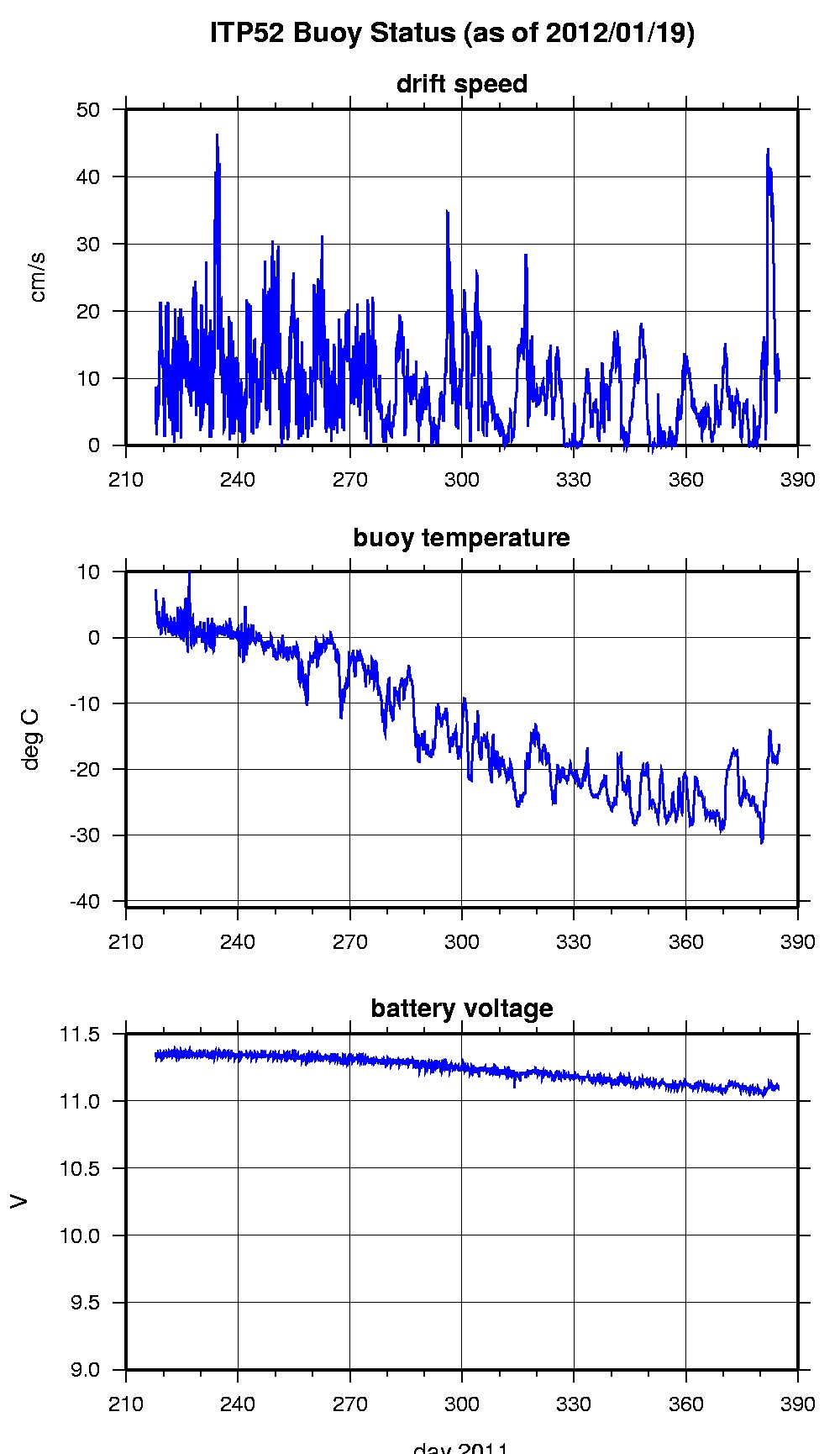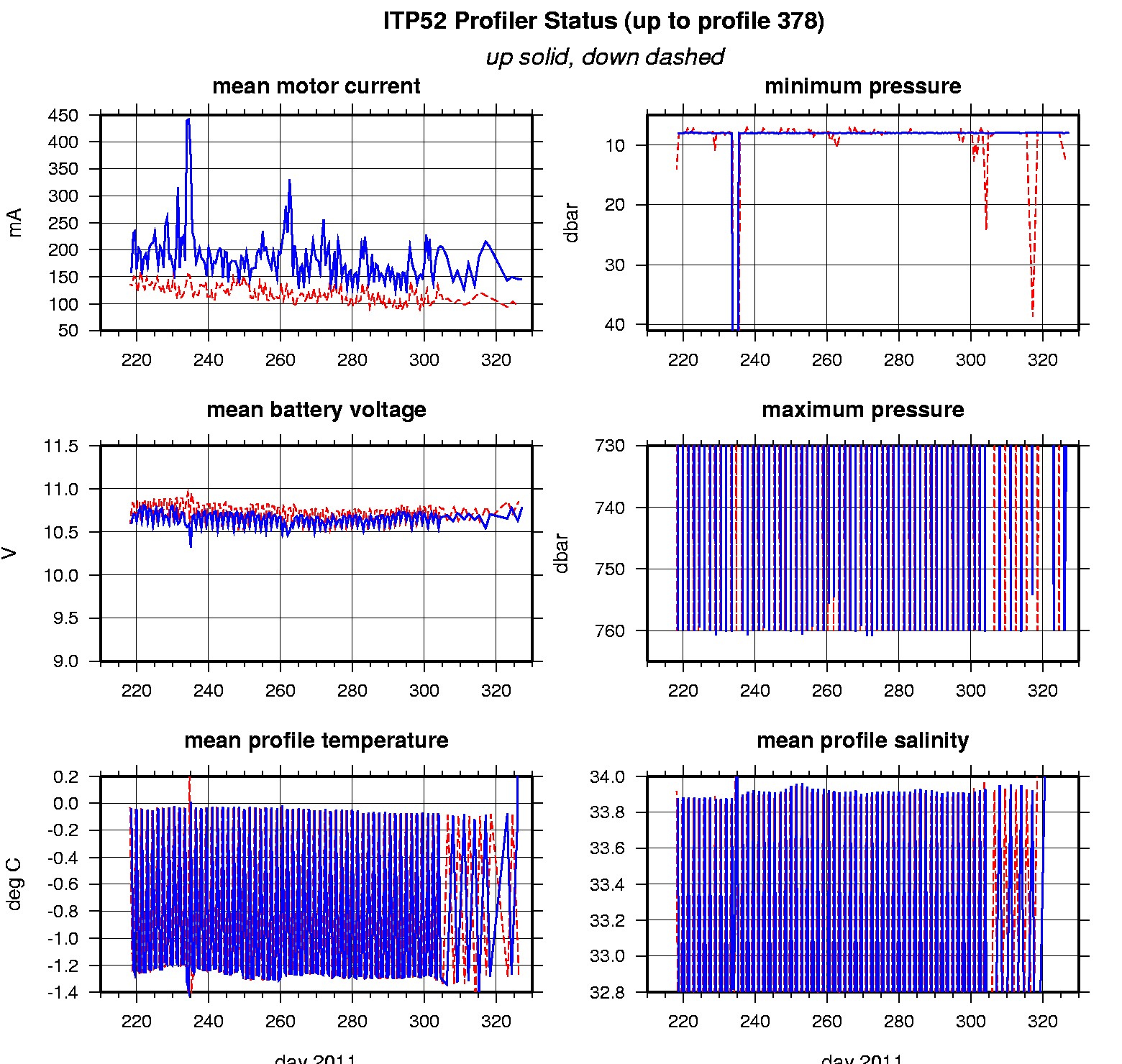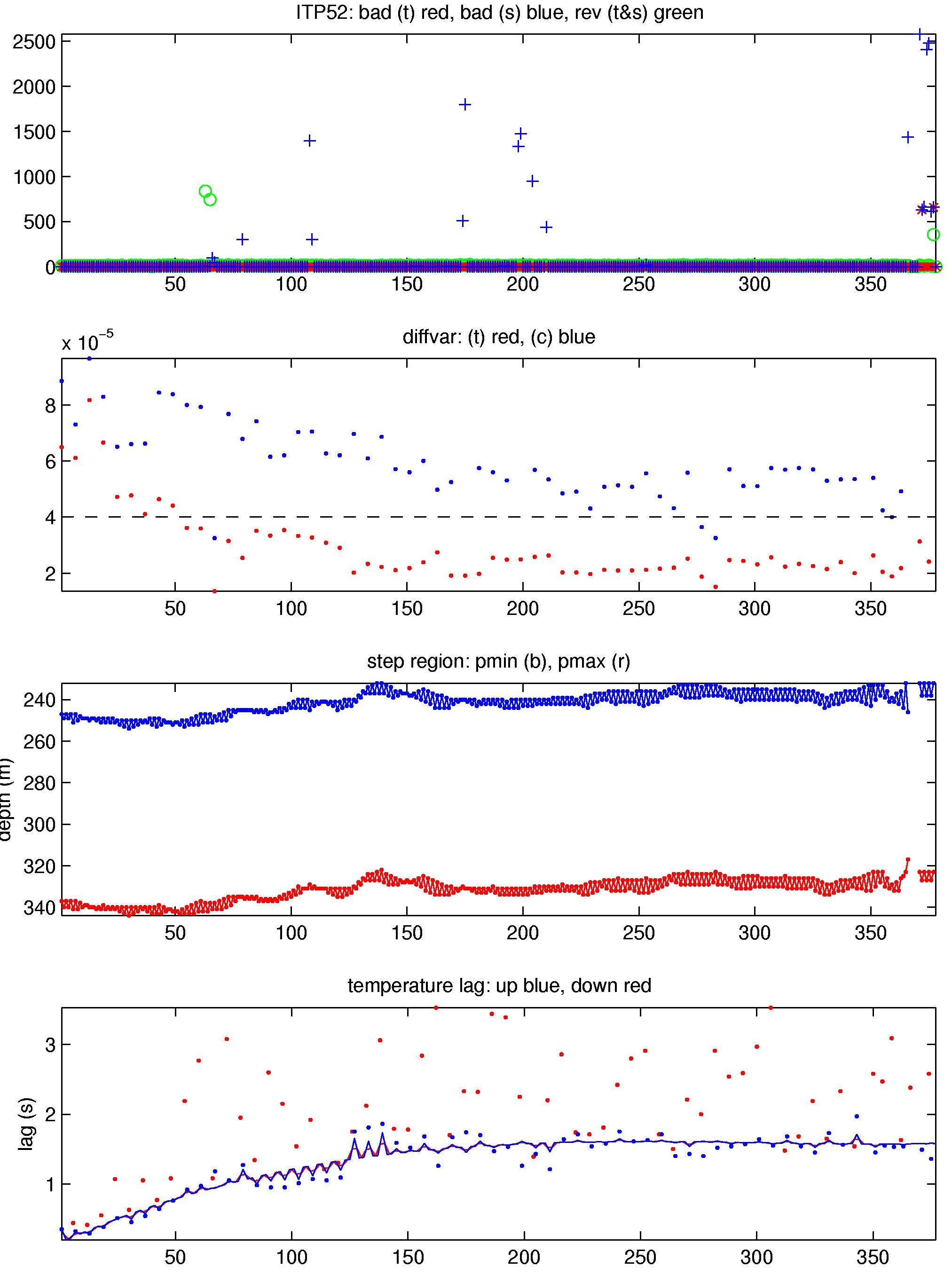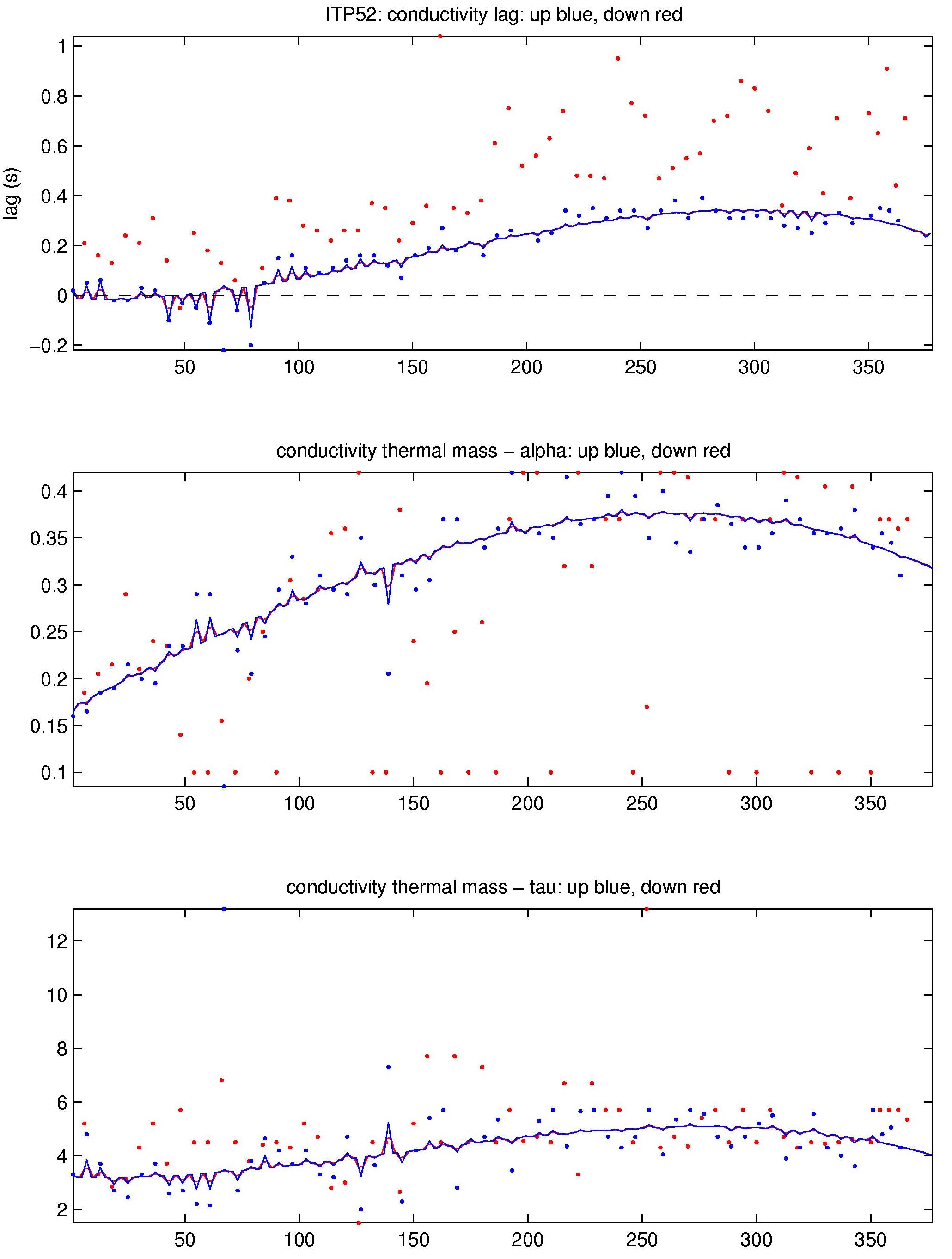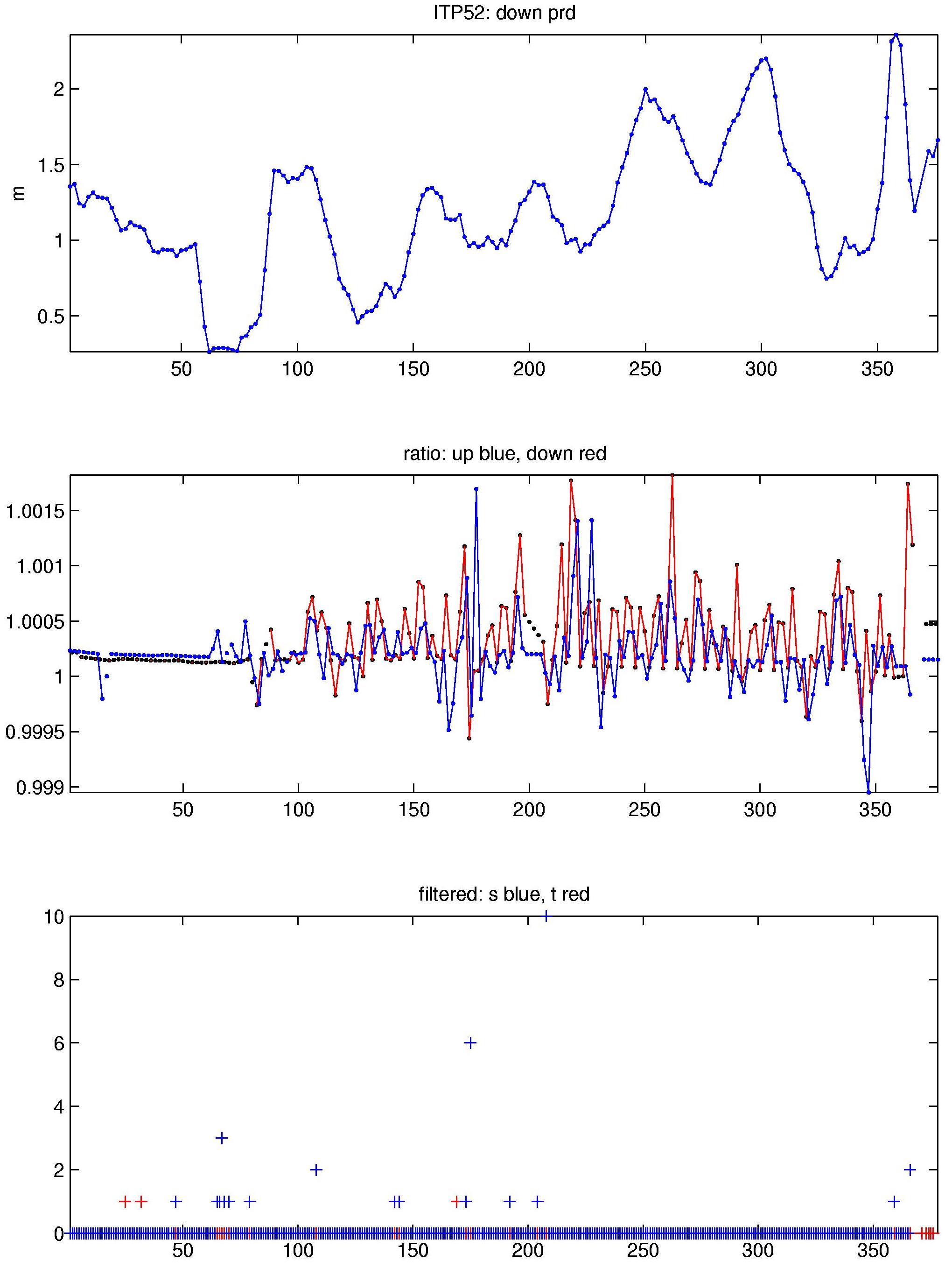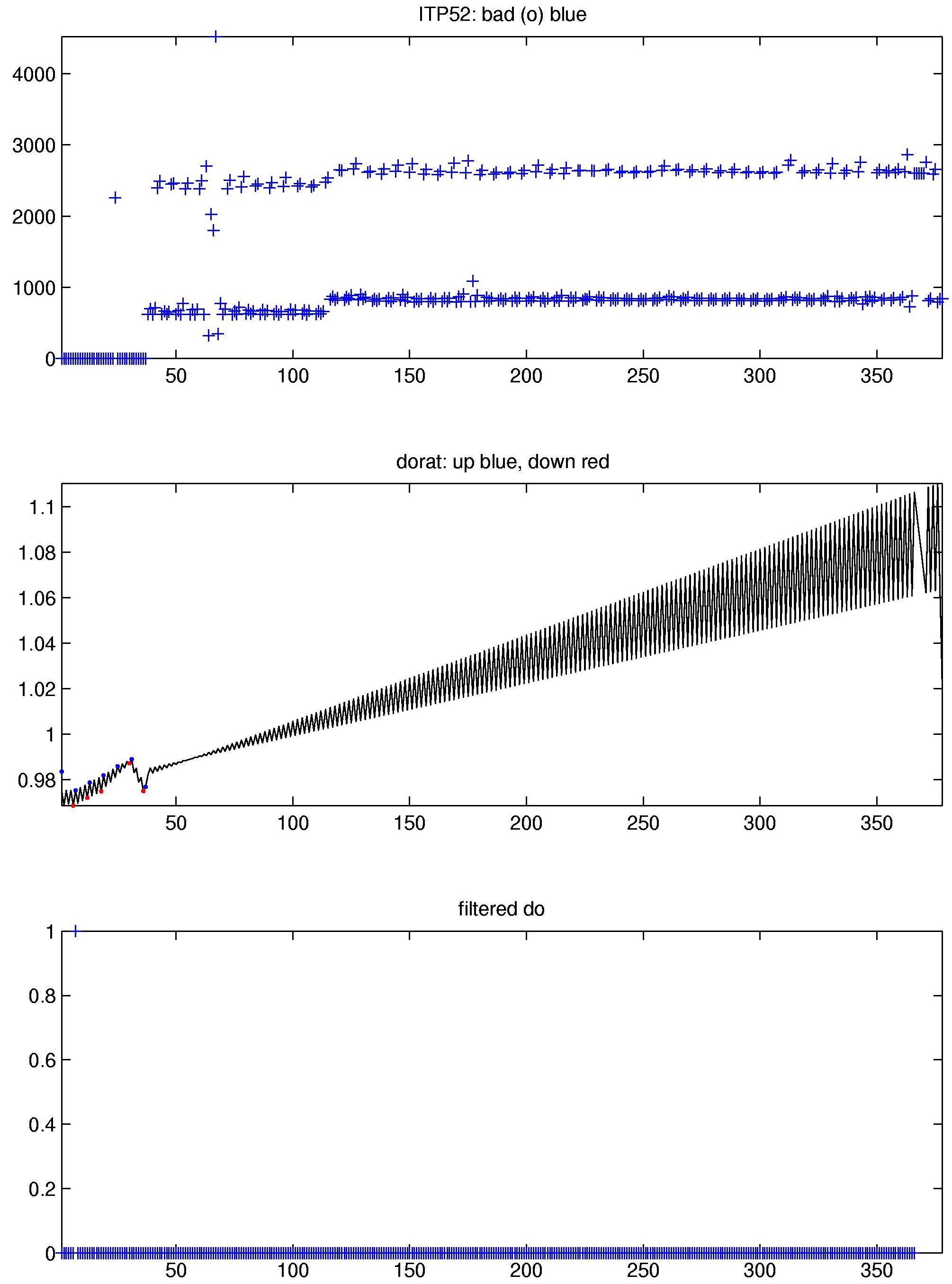ITP52 Data Processing
The 378 profiles that were recovered from the ITP were processed according to the procedures described in the ITP Updated Data Processing Procedures. The processing parameters for are shown in the figures to the right. The biosuite sensor data handling are described in Laney et al., (2014). Buoy drift speeds were almost always less than 30 cm/s so the profiler covered nearly the full extent of nearly every profile that it communicated to the surface package, except for profiles 63 to 68, 367-370, and 378 which were influenced by excessive drift speeds.
The temperature and salinity data were mostly free of obvious fouling. Only 9 profiles out of the first 365 had a large amount of bad salinity points (>100) that were removed, but all of the salinities after profile 370 were corrupted. Thermohaline staircases were present during the time series in the deep profiles, enabling lag correction estimates. However, the lags were not typical and generally increased over the timeseries. The profile-to-profile potential conductivity corrections were mostly constant for the first 60 profiles, and then varied greatly for the remainder of the time series. Part of the variability is likely due to the fact that the short 200 m profiles could not be corrected to the deeper, more stable conductivity levels. Due to a problem with an internal seal on this generation of DO sensors, the sensor failed after profile 37.
See the Data Products tab to the left for descriptions of the three levels (I, II, III) of data processing and to access all data.
References:
Laney, S.R., R.A. Krishfield, J.M. Toole, T.R. Hammar, C.J. Ashjian, and M.-L. Timmermans, 2014. Assessing Algal Biomass and Bio-optical Distributions in Perennially Ice-Covered Ocean Ecosystems. Polar Science, Vol. 8, http://dx.doi.org/10.1016/j.polar.2013.12.003.
